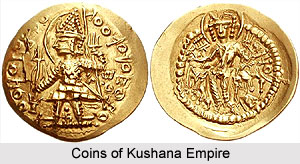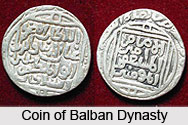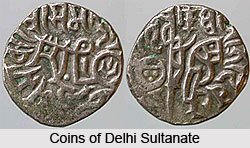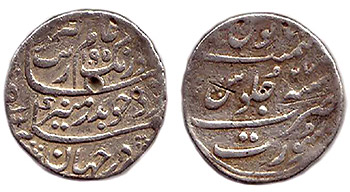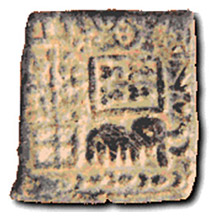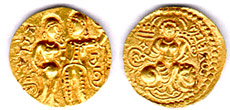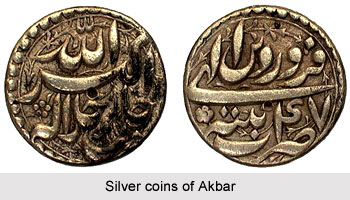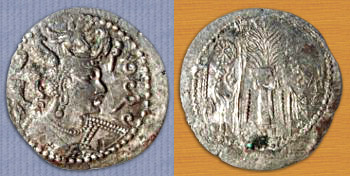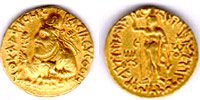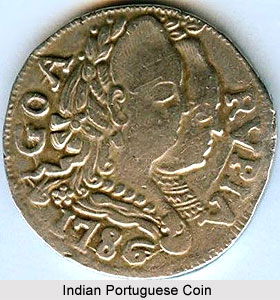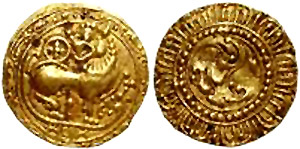 Coins of Kadamba Dynasty are probably the earliest ones to use Kannada letters. Kadambas minted several coins. Most of the coins were produced through the punching method. Each alphabet on the coins has been punched with a different punch. The main device is punched at the centre of the coin. At times this has been punched so deeply that the coin assumes the shape of a concave cup.
Coins of Kadamba Dynasty are probably the earliest ones to use Kannada letters. Kadambas minted several coins. Most of the coins were produced through the punching method. Each alphabet on the coins has been punched with a different punch. The main device is punched at the centre of the coin. At times this has been punched so deeply that the coin assumes the shape of a concave cup.
Few coins have been produced by a surprising combination of the die-striking and the punch-marking techniques. These coins on one side display a die-struck design, while the other side displays a series of symbols punched one after the other.
Kadamba coins are generally known as padmatankas or lotus coins. This is because the central symbol on the face of most of them is the lotus. On some coins the frontage of some Kadamba coins features the lion. Some early coins of Kadamba Dynasty bear the Kannada inscription Vira and Skandha.
Coins with Kannada legends have been discovered in Banavasi where Kadamba dynasty had ruled. The coins of the Kadambas of Goa are unique as they have alternate inscription of the king`s name in Kannada and Devanagari in triplicate.
Kadambas coins were the heaviest and the purest of all medieval Indian gold coinage. Two types of gold coins were issued by them: Punch-marked gold coins and Die struck gold coins. During 1075-1094 AD, Shanti Varma, issued Gold punch marked coin and in 1065 AD, Toyimadeva issued die struck gold coins. Some of the Kadamba coins have conches and chakras as symbols. One of the epithets on the coins, sri dosharashi have been used by the Kadamba king Krishnavarma II (ruled 516-540).
This article is a stub. You can enrich by adding more information to it. Send your Write Up to content@indianetzone.com
